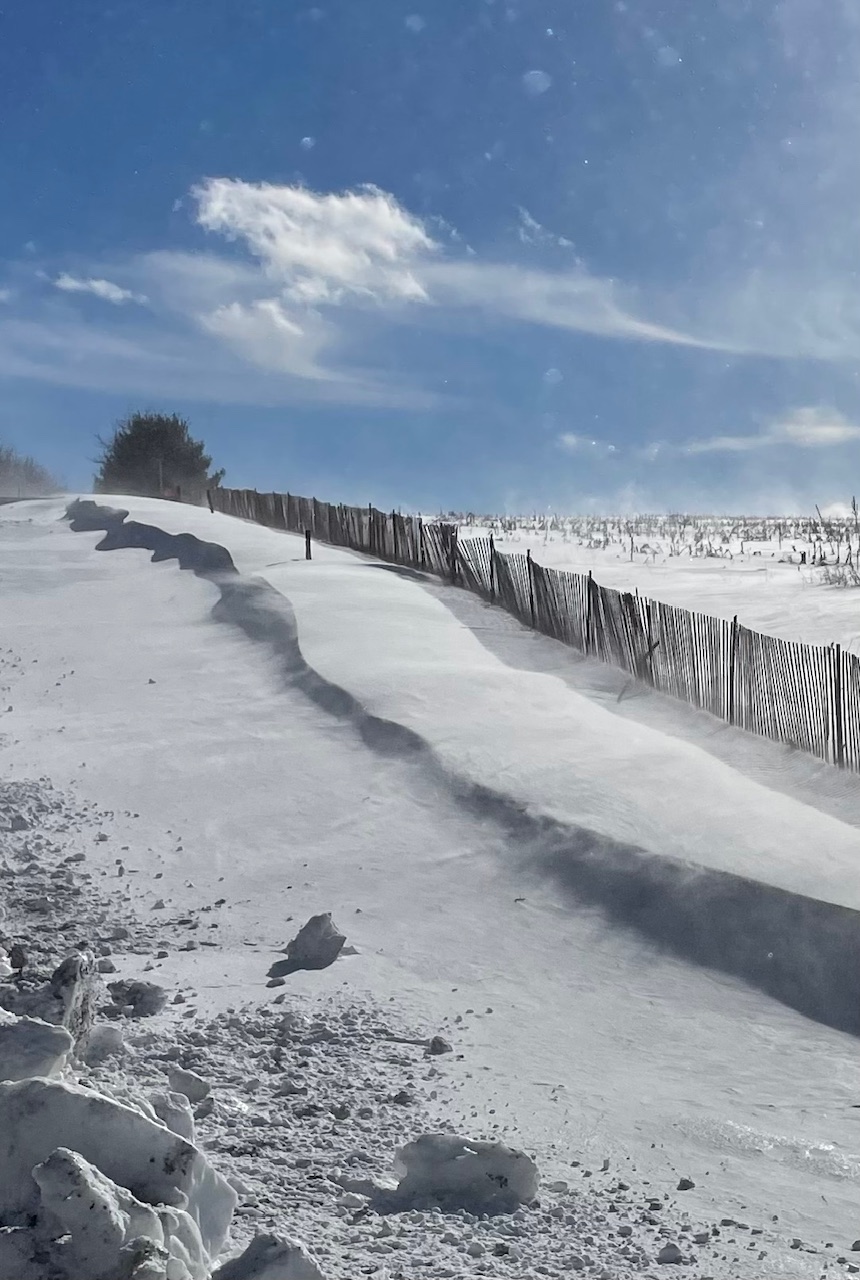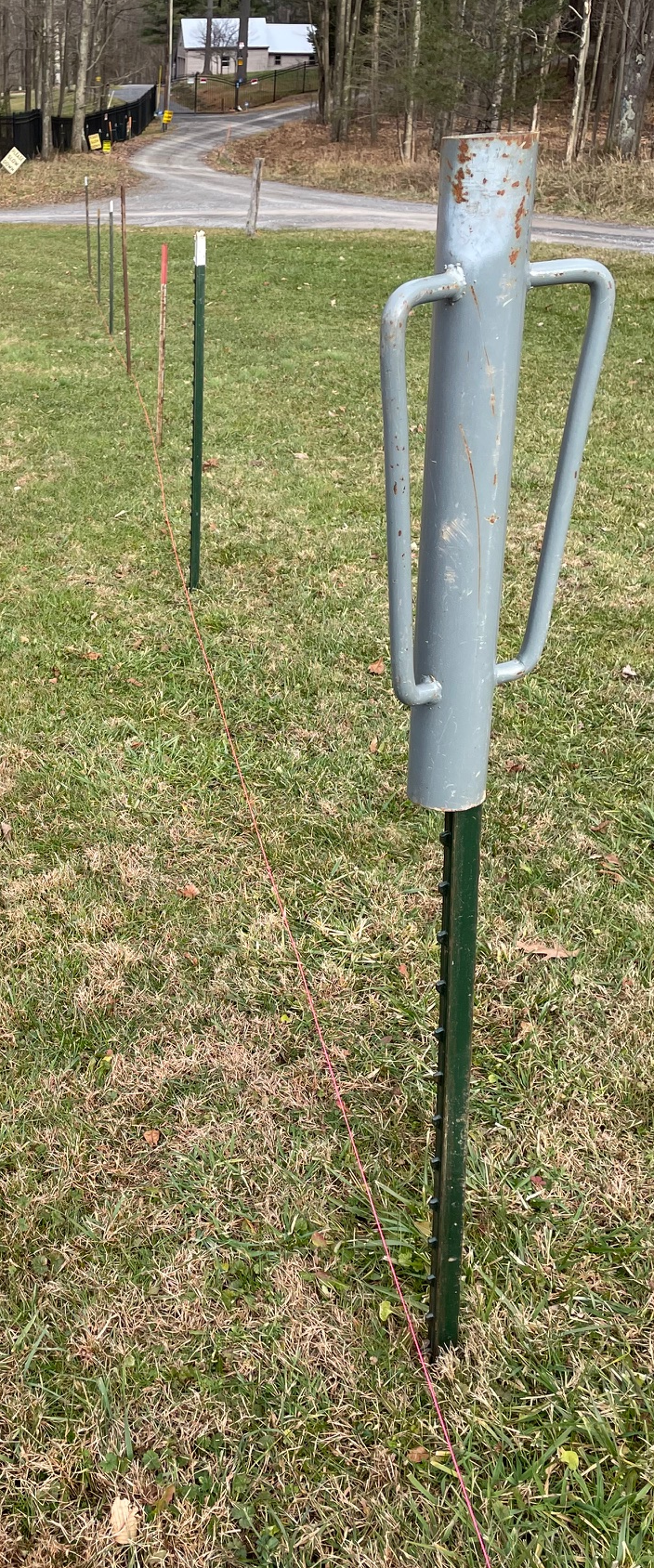Snow Fence Rolls Calculator
Tags | |
UUID | cd4397fb-9855-11ee-a8f1-bc764e203090 |
The Snow Fence Rolls Calculator calculator computes the number of rolls of snow fence are needed for a fence line. It also estimates the cost of the fencing.
INSTRUCTIONS: Choose units and enter the following:
- (FLL) Fence Line Length
- (RL) Length of Rolls of Snow Fence
- (PPR) Price per Roll (default is price of 100' plastic, see price survey below)
Rolls of Snow Fence for Fence Line (nR): The calculator returns the number of Rolls of Snow Fence needed and the estimated cost to buy them.
The Snow Fence Price Survey Data is maintained to assist in making rough price estimates for projects, vCalc performs periodic pricing surveys of nationally advertised commodities, in this case, insulation. The pricing came from the website of the Store at the Date specified. This is for rough calculating convenience and local pricing should ALWAYS be used. The Snow Fence Pricing Survey Data information is as follows:
- Date: 12/11/23 at Store: Tractor Supply
- Snow Fence Pricing in U.S. dollars per unit:
- 4' x 50' Plastic Snow Fence Price: $29.95
- 4' x 100' Plastic Snow Fence Price: $33.99
- 4' x 50' Wood Snow Fence Price: $79.99
CAUTION: The pricing information provided is for calculating convenience with NO implied guarantees to the accuracy of the values listed. Authoritative sources should be sought to confirm any value before risking health or wealth on the veracity of the data. Furthermore, Calc gives no guarantee that you will be able to buy products at listed prices or even if they will be available. The data provided is purely a convenience for making estimates, so we strongly recommend that one ALWAYS use local pricing and authoritative specifications.
The Math / Science
The number of Snow Fence Rolls for a fence line is easy to calculate. The formula is:
nR = roundup( FLL/RL)
where:
- nR = Number of T Posts
- FLL = Fence Line Length
- RL = RL
The Snow Fence Calculator have function to compute the number of rolls of snow fence and the number of posts needed. They also includes estimated cost of materials for both rolls (plastic and wood) and T Posts. The Snow Fence Calculator functions are:
- Snow Fence Rolls Calculator: This compute the number of rolls of snow fence are needed for a fence line. It includes a cost estimate for the total number of snow fence rolls needed.
- T Posts for Fence Line: This computes the number of T Posts needed for a snow fence. It includes a cost estimate.
The most common snow fences are either wood with slats or plastic with large regular holes. In both cases, the wind needs to go through the fence or it will act as a sail and the fence will be more prone to be blown over due to horizontal stress. Since there is less horizontal stress, snow fence can be erected using T Posts. T Posts are made of steel, while one or two are easily carried, several can be too heavy to carry.
are either wood with slats or plastic with large regular holes. In both cases, the wind needs to go through the fence or it will act as a sail and the fence will be more prone to be blown over due to horizontal stress. Since there is less horizontal stress, snow fence can be erected using T Posts. T Posts are made of steel, while one or two are easily carried, several can be too heavy to carry.
T Post Weight:
- 66" (5'6") Post = 7 pounds
- 72" (6') Post = 7.5 pounds
- 84" (7') Post = 8.75 pounds
- 96" (8') Post = 10 pounds
T Posts are easy to drive into soft (not frozen) ground using a post driver. Post drivers are a great investment if one is driving T Posts or U-channel posts in the ground. Post drivers do less damage to the posts, create fewer sharp edges, drive the posts MUCH QUICKER that even a sledge hammer and they are less likely to injure you.
A wood snow fence can be heavy too. A 50' x 4' wood snow fence roll can weigh up to 80 pounds.
T Posts
A T Post, also known as a T-bar or a T-stake, is a type of fence post used primarily in agricultural and farming applications to support fencing. It is named for its shape, which resembles the letter "T" when viewed from the end. These posts are typically made of steel and come in various lengths and weights, allowing them to be driven into the ground easily to provide stability for fencing materials like wire mesh, barbed wire, or electric fencing. T-posts are durable, cost-effective, and commonly used in agricultural settings for their ease of installation and ability to withstand tension from fencing materials.
T Posts are versatile and can be used with various types of fencing materials in agricultural, residential, and commercial settings. Some common types of fencing used with T-posts include:
- Wire Mesh Fencing: This includes welded wire or woven wire mesh that can be attached to T-posts using clips or fasteners. It's commonly used for containing livestock, creating enclosures, or securing gardens.
- Barbed Wire Fencing: T-posts are often utilized for supporting strands of barbed wire, which is frequently used in agricultural applications for livestock containment and perimeter fencing.
- Electric Fencing: T-posts can serve as the support for electric fencing systems. Electric wires or tapes are connected to insulators on the T-posts to create an electric barrier for livestock control.
- High-Tensile Fencing: This type of fencing uses high-tensile wire stretched between T-posts to create a strong and durable barrier for containing livestock. It's known for its strength and longevity.
- Plastic or Wooden Rails: T-posts can also be used to support plastic or wooden rails, creating a solid and sturdy fence commonly seen in rural or residential settings.
- Temporary Fencing: T-posts are often used in temporary fencing setups, supporting various materials such as plastic mesh, snow fencing, or other lightweight barriers used for short-term purposes.
The choice of fencing material often depends on the specific requirements of the enclosure, the type of animals being contained, desired durability, cost considerations, and the intended purpose of the fence. T-posts provide a versatile and adaptable option for securing different types of fencing materials.
U - Channel Posts
A U-channel post, also known as a U-post, is a type of metal fence post that, as the name suggests, has a U-shaped cross-section when viewed from the side. These posts are typically made of galvanized steel, making them durable and resistant to rust and corrosion.
 U-channel posts are commonly used in various fencing applications, including:
U-channel posts are commonly used in various fencing applications, including:
- Signage: They are frequently employed to support road signs, traffic signs, and other informational or regulatory signs along roadways and in other public areas.
- Temporary Fencing: U-channel posts are also utilized in temporary fencing setups, such as for construction sites, crowd control at events, or to cordon off specific areas temporarily.
- Residential Fencing: Sometimes used in residential settings, especially for lightweight fencing projects where they can be paired with wire mesh, plastic netting, or other materials for small enclosures or garden protection.
- Landscaping: In landscaping projects, U-channel posts might be used to secure barriers or boundary markers, define pathways, or support light fencing around garden areas.
These posts typically have pre-punched holes along the length of the channel, allowing for easy attachment of fencing materials using wires, fasteners, or clips. They are relatively easy to install and offer versatility for various applications due to their design and the ability to accommodate different types of fencing materials.
Metal Post Driver
The photo (right) shows a metal post driver on top of a T Post. These metal post drivers drastically simplify installation of T Posts or U-Channel Posts. Metal post drivers like the one shown are much safer to use, save a tremendous amount of time, require far less effort to drive the posts AND keep the top of the posts from becoming deformed. Driving a post with a hammer or small sledge often has the effect of creating razor sharp deformations on the top of the posts.
Collections
- Comments
- Attachments
- Stats
No comments |

